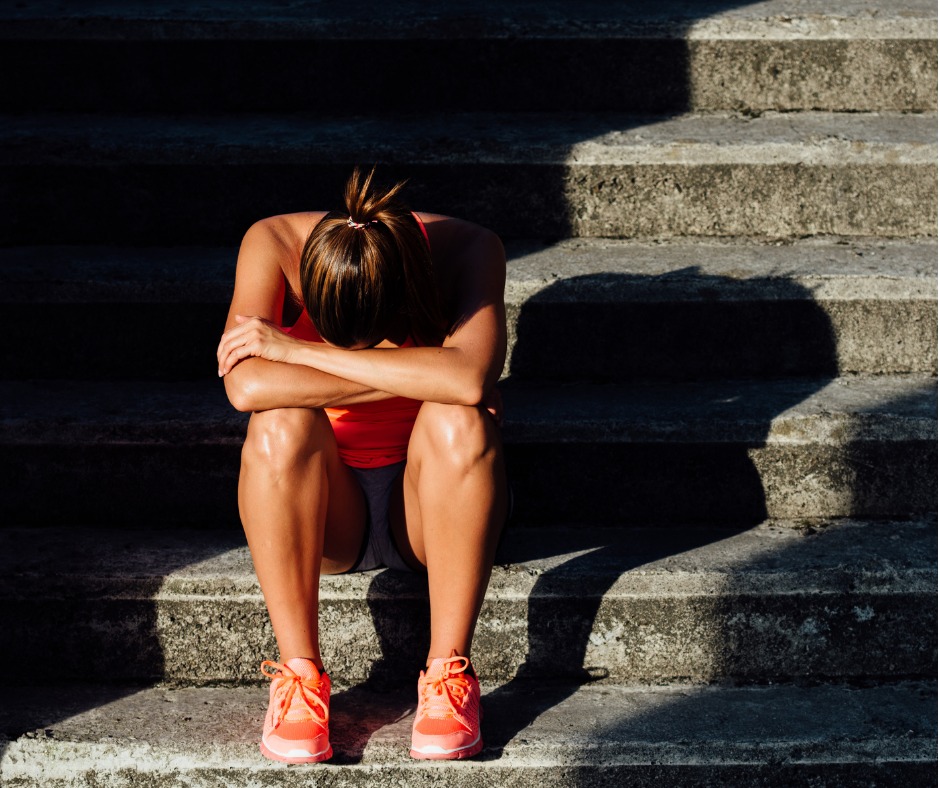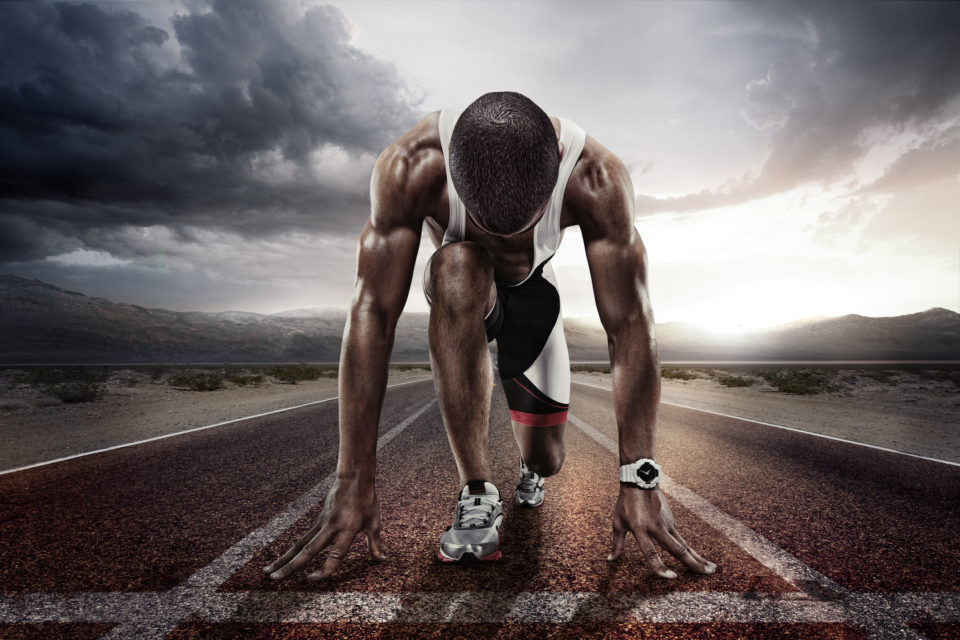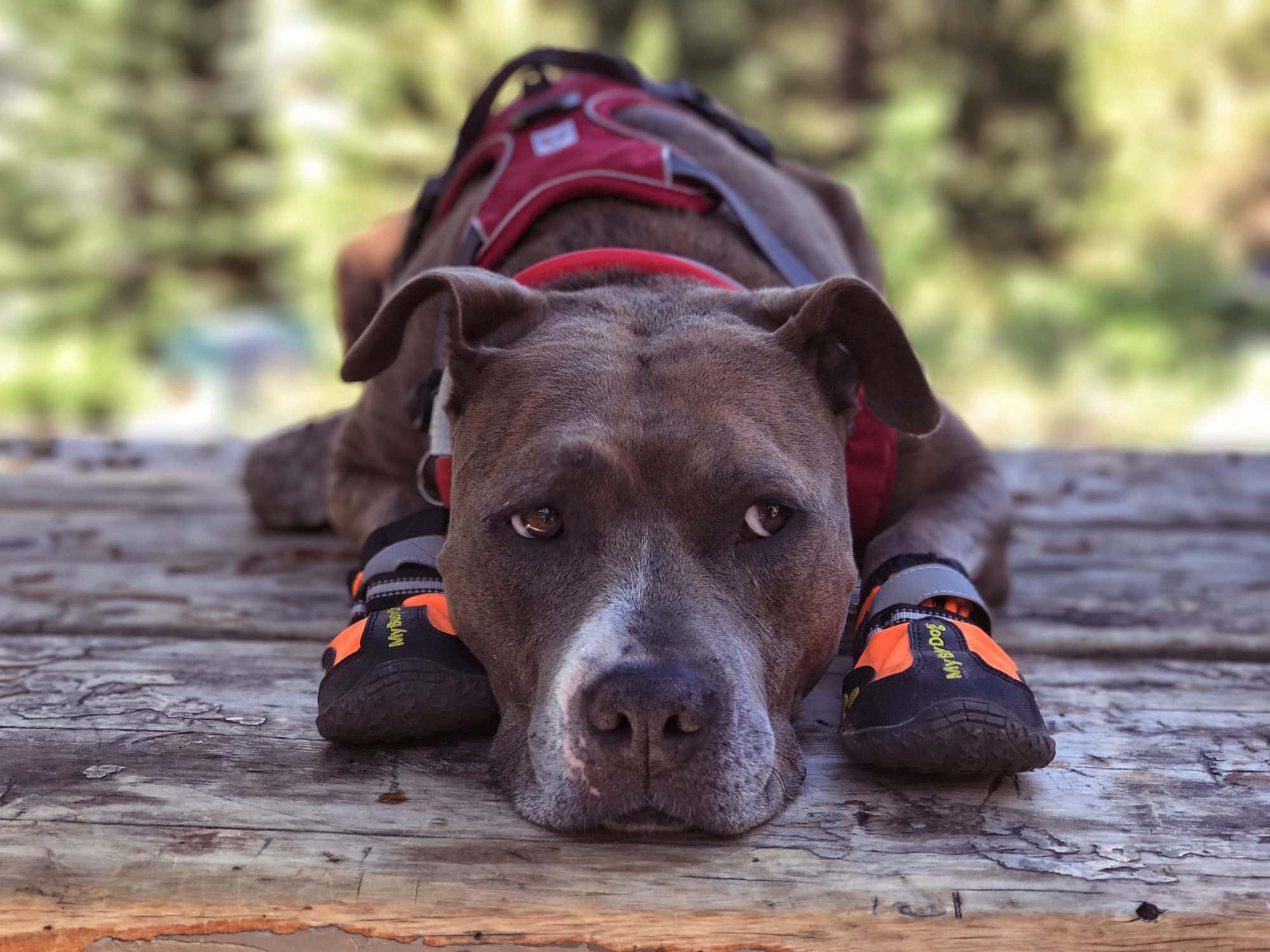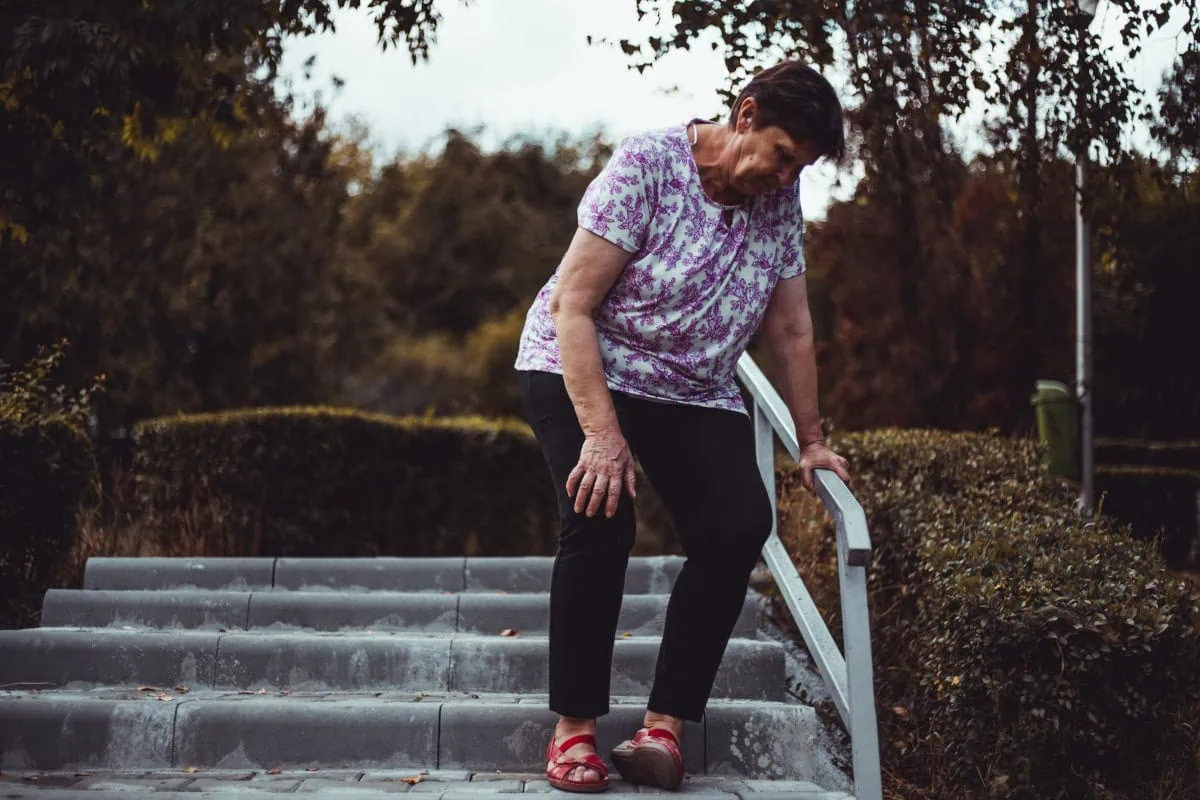
For many, neuropathy becomes a common and difficult part of their life. It’s been estimated that 25-30% of people in the U.S will experience neuropathy at some point in their life. Peripheral neuropathy refers to the nervous system outside of the spinal cord and brain area. It is the nerves that go down into the foot & leg, or into the arms & hands. The symptoms of Peripheral neuropathy can include burning, tingling, numbness, and oftentimes weakness. It usually affects both feet, but not always – which is why peripheral neuropathy can affect walking. There are many nerve fibers directly underneath the skin called sensory nerves, and when these nerves start to die away it inhibits you from feeling pressure, resulting in not being able to feel your feet on the ground. People may also not be able to feel hot and cold on their feet.
Dibaetic Neuropathy
Diabetic neuropathy affects approximately 50-70% of those with diabetes, and when severe can result in ulcers and even amputation.It could start with something as simple as a callous that the patient cannot feel. This then creates an ulcer which can become infected. Oftentimes because there is a lack of feeling, the patient has no pain, and therefore no warning signs. If this results in an amputation, the situation can become life threatening. If you do not have diabetes, it is important to know that many people may be prediabetic, and the first signs can be symptoms of neuropathy in the feet. So if you have never been diagnosed with diabetes, but you’re getting neuropathy symptoms, there’s a chance that you could be pre-diabetic.
There are other types of neuropathy including chemotherapy induced neuropathy and alcoholic neuropathy. Aside from diabetic neuropathy, the most common diagnosis patients are given is idiopathic neuropathy – meaning neuropathy from an unknown cause.
What Are The Benefits Of Walking?
The benefits of walking are both mental and physical. Mentally, exercise has been shown to help people emotionally. Exercise can help increase dopamine levels in the brain (dopamine is a neurotransmitter in the brain that is associated with the feel good sensation you have after exercise).It is also thought that exercise can help you sleep better. The importance of sleep has become more apparent as it not only helps you feel better the next day, but can also help with high blood pressure, cancer and diabetes. Walking may also help to keep your weight down, which can have a big impact on controlling your blood sugar levels, blood pressure and even joint arthritis.
So how does peripheral neuropathy affect your walking? To better understand, I’d like to clarify the three ways neuropathy can have an effect on walking.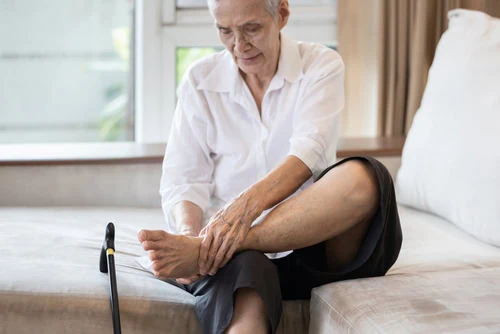
Number 1 – PAIN
If you are in a lot of pain from the burning and tingling in your feet, maybe you’ll feel uncomfortable to go on a walk. If the pain is mild, you can still go for a walk, but maybe just not as far as you could before. So if your symptoms are not that painful, that’s even more of a reason to consider walking.
If your pain is manageable while you walk, it’s a good idea to gradually increase the frequency and duration each time you walk. One principle to remember is that your body needs rest days. So rather than walking every day for 25 minutes five or six days per week, it may be better to walk four days for 35-45 minutes. Why? It’s thought that those extra minutes (for example, 35 minutes) tend to rev up your metabolism more for a longer period after the aerobic activity. This leads to more calories burned and better cardiac health. If walking is too painful, consider biking, swimming or pool exercises instead.
Number 2 – NUMBNESS
If your nerves are significantly damaged, you may experience numbness in your feet. This also serves as another factor that suppresses your desire to walk. Why? Because your ability to feel your feet on the ground has been reduced.
When your ability to feel your feet on the ground diminishes, you could feel unstable and possibly walk with a wider gait. In some cases you may even shuffle due to the lack of feeling. This can be a challenge, and it might make you even more susceptible to falling. For this scenario it is best to walk on flat surfaces and avoid walking or hiking on irregular terrain.
Number 3 – WEAKNESS
Another symptom caused by peripheral neuropathy is weakness. This ranges from mild to severe in the case of drop foot, which is when it’s difficult to pull your foot or toes upwards. You could also be experiencing what I call “weakfoot”, meaning it’s difficult to push your foot off the ground. Again, it is most important to avoid irregular terrain, so it is important to consider or experiment with other forms of exercise.
If you have weakness or numbness that is not too severe, and you’re able to walk for exercise, then make sure your shoe selection is good. Generally, a shoe with more support (which is called a motion control shoe) should be used. Additionally, keep an eye on your shoes and make sure you do not overwear them to the point that they start to break down.
These are the ways that neuropathy can affect your walking. Please understand that it is important to seek treatment if you’re experiencing neuropathy. Contrary to what conventional medicine says, you do not have to live with it or take medications. At Anderson Center for Neuropathy and Chronic Pain, we can reverse the symptoms of neuropathies with surgical or non-surgical means.
Walking is one of the best forms of exercise for your mental and physical well-being. We hope this blog gives you a better understanding of peripheral neuropathy affect walking and how it impacts exercise regimen.
Treatment for neuropathy in legs and feet Broomfield and Fort Collins. Call or email us today.
Exercises to Improve Walking for People 50+ with Peripheral Neuropathy
Peripheral neuropathy can make walking more challenging due to loss of sensation, muscle weakness, and balance issues. However, staying active with gentle, low-impact exercises can improve mobility, reduce discomfort, and enhance overall stability.
Safety Tips Before You Start
- Choose a stable surface – Perform exercises near a chair, wall, or countertop for support.
- Wear proper footwear – Supportive, non-slip shoes reduce the risk of falls.
- Go slow and listen to your body – If you feel pain, dizziness, or weakness, stop and rest.
- Exercise at the right time – If neuropathy worsens at certain times of the day (e.g., after long periods of standing), adjust your routine accordingly.
- Stay hydrated and take breaks – Dehydration and fatigue can increase fall risks.
1. Gentle Stretching for Flexibility
As we age, muscles naturally become tighter, increasing the risk of falls. Stretching helps keep the legs flexible and reduces stiffness.
Seated Calf Stretch (Safer Alternative)
- Sit in a sturdy chair, extend one leg, and gently pull your toes toward you using a towel or band.
- Hold for 20-30 seconds per leg.
Ankle Circles (Improves foot mobility)
- While seated, lift one foot and slowly rotate your ankle in circles to increase flexibility.
- Do 5-10 circles in each direction.
2. Low-Impact Aerobic Exercise for Better Circulation
Aerobic activities increase blood flow and nerve function, helping slow neuropathy progression. Safe options for older adults include:
- Seated Marching – Sit tall in a chair, lift one knee at a time in a marching motion. (Great alternative to walking!)
- Slow, short walks indoors – Use a walker or cane for added support if needed.
- Water aerobics or pool walking – The water provides natural support, reducing strain on joints.
- Stationary cycling (with back support) – Helps strengthen legs without impact on the feet.
3. Calf Raises for Strength and Stability
Weak calf muscles can make it harder to lift the heels and maintain balance while walking.
- How to do it: Stand near a chair or counter for support. Slowly rise onto your toes, hold for a few seconds, and lower back down.
- Modifications: If standing is difficult, try a seated version by pressing the toes down while lifting the heels off the floor.
- Reps: Aim for 10-15 repetitions for 2-3 sets.
4. Leg Raises to Prevent Falls
As neuropathy weakens the hips and legs, walking can feel unsteady. Strengthening these muscles can improve control and confidence.
- Seated Leg Raises (Easiest Version) – Sit in a sturdy chair, straighten one leg, hold for 5-10 seconds, then switch sides.
- Standing Side Leg Raises – Holding onto a chair, lift one leg to the side, keeping your torso straight. Lower slowly and repeat 10 times per leg.
- Modification: If standing is too difficult, try side leg lifts while seated.
Final Tips for Success
- Start with shorter sessions (5-10 minutes) and increase gradually.
- Focus on posture – Keep your chest lifted and shoulders relaxed while exercising.
- Consider a balance aid – If you feel unsteady, use a cane or walker when doing standing exercises.
- Try chair exercises – If standing is difficult, most exercises can be done while seated for safety.
By practicing these exercises regularly, adults 50+ can improve strength, reduce fall risks, and regain confidence in walking despite peripheral neuropathy.
Frequently Asked Questions
What exactly is peripheral neuropathy, and how does it impact mobility?
Peripheral neuropathy involves damage to the nerves outside the brain and spinal cord, often leading to sensations like burning, tingling, numbness, and weakness in the feet and legs. This nerve damage can hinder your ability to sense the ground, making walking challenging and increasing the risk of instability and falls.
How prevalent is diabetic neuropathy, and what are the potential dangers?
Diabetic neuropathy affects 50-70% of individuals with diabetes, potentially leading to severe complications such as ulcers and amputations. Symptoms often start with numbness, which can mask injuries, allowing them to become serious. Even without a diabetes diagnosis, neuropathy symptoms may indicate pre-diabetes, necessitating early intervention.
What advantages does walking offer for those with neuropathy?
Walking provides numerous benefits, including improved mood, better sleep quality, weight management, and enhanced heart health. It helps regulate blood sugar levels and can reduce the risk of complications like high blood pressure and joint issues. Walking can be a safe and effective exercise with proper precautions.
How can pain from peripheral neuropathy affect walking?
Pain from neuropathy can deter walking, but managing the pain and gradually increasing walking duration can be beneficial. When walking becomes too painful, alternatives such as cycling, swimming, or water aerobics can provide similar health benefits without exacerbating the pain.
What steps should be taken if neuropathy causes numbness or weakness?
Numbness and weakness can compromise balance and safety. It is crucial to walk on smooth, even surfaces and wear supportive shoes to prevent falls. For severe symptoms, consider low-impact activities like swimming or stationary biking to maintain fitness without risking injury. Regular monitoring and appropriate footwear are key to managing these challenges.
